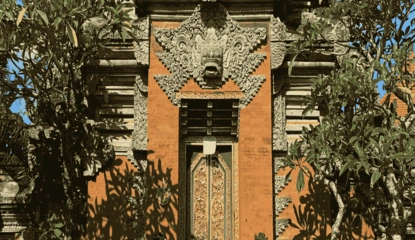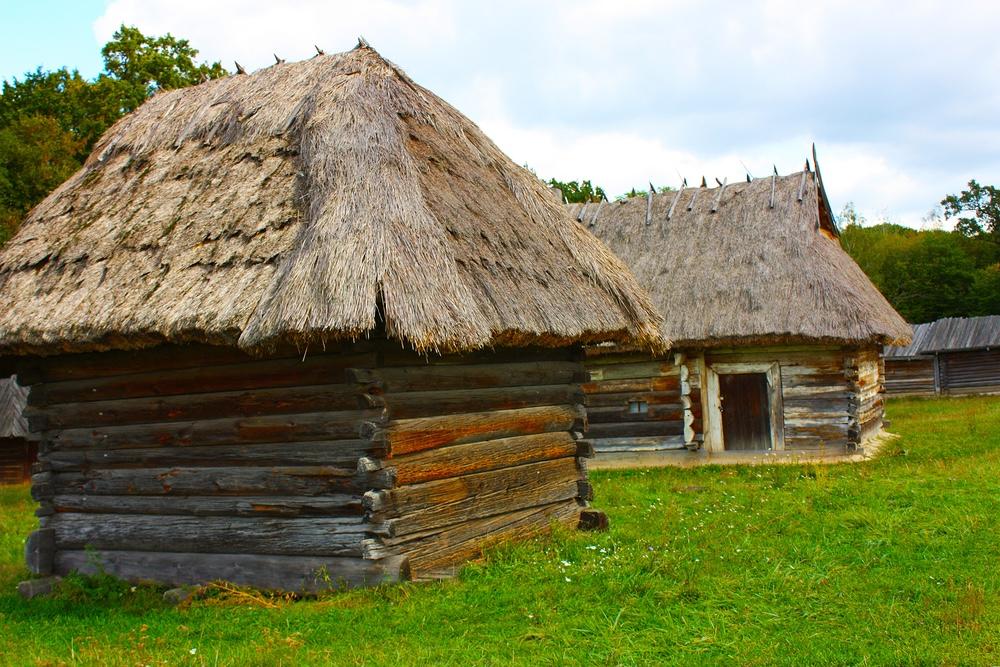Have you ever heard of the Honai house? This traditional house from the central mountains of Papua is not just a place to live, but also a potent symbol of the cultural identity of indigenous Papuan tribes.
With its distinctive round shape and thatched roof, the Honai house holds many stories about life in harmony with nature. Let's explore the meaning and uniqueness of this warm traditional house!
Unveiling the Veil of a Small House in the Embrace of the Papuan Mountains
The Honai house is a traditional house typical of the Dani tribe and other tribes living in the central mountainous region of Papua.
It is designed to withstand the cold weather and extreme mountain terrain. It is simple, small, round, and has a thatched roof, but its function is essential in the lives of indigenous people.
Behind its simplicity, Honai holds a strong philosophy of life about warmth, unity, and human connection with nature.
A Cultural Gem that Hides Secrets Behind Straw and Wood
The Honai House is not only a place to live, but also a living space that represents the identity and cultural values of indigenous Papuans.
From the materials it is made of to its spatial layout, every part of this house has its own meaning.
Traditional House in the Central Mountains of Papua
Honai are built of wood and thatched roofs, standing firmly in the highlands such as Wamena and the Baliem Valley.
Its location far from the city makes it very natural and is still maintained for generations.
Meaning of the word 'Honai'
In the local language, "Honai" consists of two words: ho (man) and nai (house), meaning a man's house.
In practice, however, the term is used for traditional houses in general. This shows that each traditional building has a specific function and name.
Ancestral Identity Space
Honai also serves as the center of social and spiritual life. In it, traditions are passed on, important decisions are made, and customary values are safeguarded.
For Papuans, this house is a symbol of their bond with their ancestors and their homeland.
Hidden Privileges that Other Houses Don't Have
Compared to other traditional houses in Indonesia, Honai is unique in terms of design and function, which is highly contextual to the mountain environment. Here are some of its unique features:
-
Round Shape with a Conical Roof of Straw or Thatch
The round design helps to block the wind from all directions, and the pointed roof makes rainwater drain easily to the ground.
Natural materials such as straw and thatch are also easily obtained from the surrounding environment.
-
Windowless, Designed to Store Heat
When you enter a Honai house, you might notice one thing: there are no windows. This is not without reason.
In the highlands of Papua, temperatures can be freezing, especially at night. This windowless design helps to maintain a warm temperature indoors, which is generated from a small bonfire in the center of the house.
So while it may look simple from the outside, Honai has a clever way of coping with extreme climates.
-
Only the Ground Floor and Small but Warm
Honai houses do not use ceramic or wooden floors like other houses, but the floor is made of earth. But make no mistake, this is precisely what keeps the temperature inside stable.
The small size is also not without purpose. Because the space is limited, the warmth can be spread evenly and create an intimate atmosphere between residents.
You will feel the warmth not only physically, but also emotionally.
-
Distinguished by Function
Did you know that not all Honai are used for ordinary residence? Papuans distinguish Honai based on its function.
There are Honai specifically for adult men, for women, and even for storing important objects or the bodies of ancestors.
Each type of Honai has specific rules and layouts that reflect the social structure and customary values of the local community.
Tracing Warm Traces in the Chest of Papua's Central Mountains
Honai houses are not just buildings, but also traces of life and culture that are still maintained today in the interior of Papua.
Scattered in the Central Highlands Region of Papua
If you want to see Honai houses firsthand, direct your trip to the Central Highlands region of Papua, especially around Wamena and Baliem Valley.
In this area, Honai houses still stand firm as part of the community's daily life. You will find traditional settlements that blend with nature, where Honai is the center of social and cultural activities.
Majestic mountain views will accompany your experience exploring this traditional house.
Still Actively Used by the Dani Tribe
Interestingly, Honai is not just a cultural heritage building that is displayed for tourists. This house is still actively used by the Dani Tribe and other tribes living in the highlands of Papua.
The function of Honai as a place to live, a traditional discussion room, and a place to store ancestral heirlooms is still maintained today.
You can witness firsthand how this tradition is not only maintained but also lives in the daily lives of its people.
Can be Visited on a Cultural Tour or Baliem Valley Festival
If you want to get the best experience when visiting Honai, the Baliem Valley Festival is a highly recommended time.
The festival is usually held every August and features a variety of cultural performances, including traditional Papuan life.
You can take a cultural tour, stay in a traditional village, and interact directly with the locals. It's not just a tour, but a journey into warm and authentic local wisdom.
Entering Another World: Ethics and Hearts When Visiting a Cultural Honai
Interacting with indigenous Papuans and visiting Honai requires respect and understanding. There are some essential things you need to pay attention to.
-
Respect Local Rules
Every village has customary rules that you must abide by, including the prohibition of taking pictures or entering houses without permission. Behave yourself and use polite language.
-
Go with a Local Guide
A local guide will not only help you understand the cultural context, but also bridge communication and ensure your visit doesn't interfere with community activities.
-
Best Time to Go
The dry season (April-September) is ideal as access is easier and the weather is friendlier. The Baliem Valley Festival in August is the best moment to experience Papuan culture as a whole.
In the middle of the cold mountains of Papua, the Honai house is a simple yet meaningful shelter. Its presence not only creates a physical space, but also a warm and strong cultural space.
Where is the location of the Honai Traditional House that can be visited?
-
Anjungan Papua Taman Mini Indonesia Indah (TMII), Jakarta
At Anjungan Papua TMII, you can find replicas of Honai Houses and Kariwari Houses built to resemble their original form in Papua.
Inside are various cultural objects such as traditional musical instruments, hunting equipment, traditional clothing, and typical Papuan carvings. This place is perfect for those of you who want to learn Papuan culture without having to go to Wamena.
TMII is open every day from 08.00 to 16.00 WIB. The entrance ticket is around Rp25,000 per person, not including the entrance fee for other additional rides or museums.
-
Pine Cave & Papua Village, Batu City, East Java
In the Goa Pinus tourist area, Batu, you can also find a replica of the Honai House, which has become one of the popular photo spots.
In addition to taking pictures, you can also learn a little about the architectural form of traditional Papuan houses through the information board available. This place is usually open every day from morning to evening.
The entrance ticket is very affordable, ranging from Rp5,000 to Rp20,000 depending on the area visited.
-
Soroba Village, Baliem Valley, Wamena, Papua
If you want to experience living in a real Honai house, come to Soroba Village in the Baliem Valley.
In this village, Honai is still actively used by the Dani people, and some houses are even provided for tourists who want to stay overnight.
You can see firsthand how daily activities are carried out inside the Honai, from cooking to traditional activities. The cost of staying is usually around Rp200,000-250,000 per person per night.
If you want to see the true face of Papua, full of local wisdom, come to Honai villages and feel the warmth of Indonesian cultural traditions for yourself!










